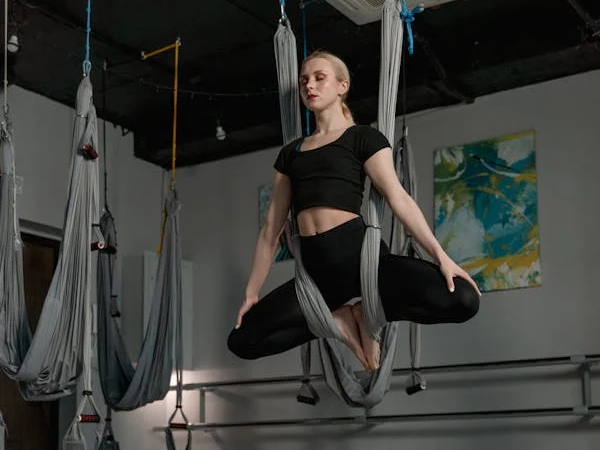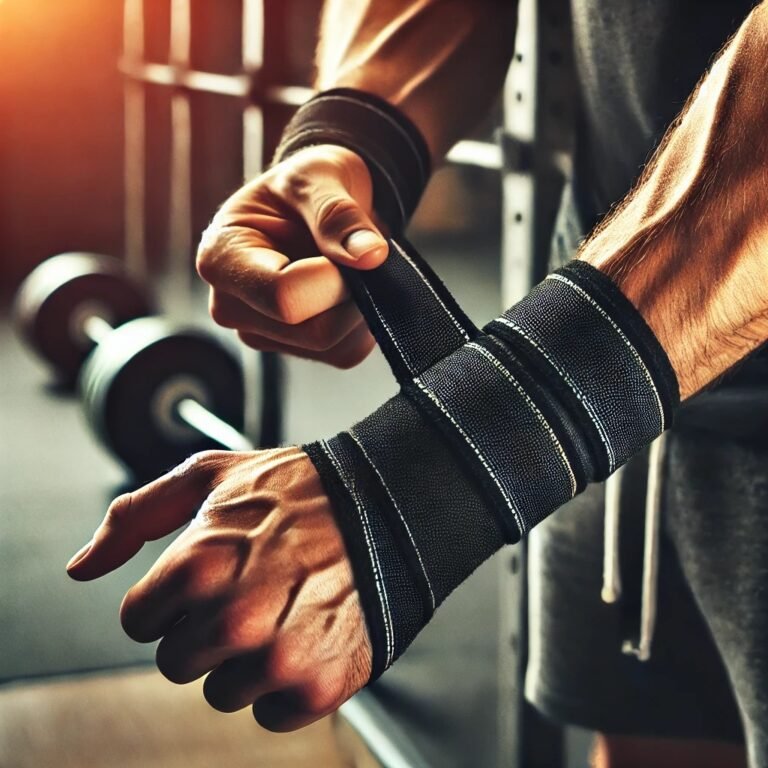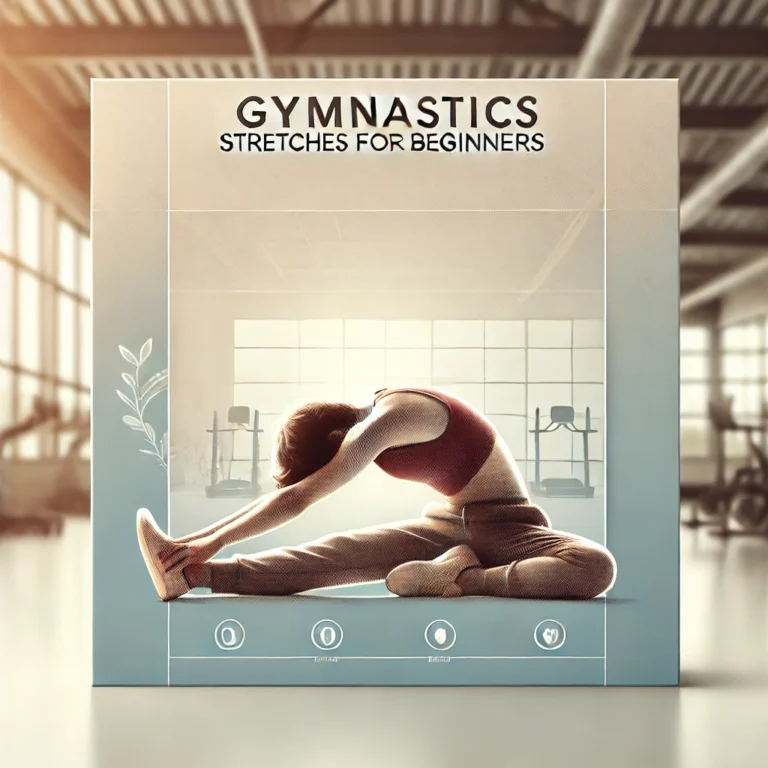Why is flexibility important in gymnastics? Flexibility is a foundational skill that plays a critical role in every gymnast’s journey, directly impacting their performance, safety, and progression. A flexible body allows gymnasts to achieve the full range of motion needed for complex skills and graceful routines. Beyond enhancing movements, flexibility helps prevent injuries by preparing muscles and joints to withstand the high demands of gymnastics, making it an essential quality for gymnasts at every level. If your just getting into gymnastics or looking for the best stretches to help boost your performance check out our guide to gymnastics stretching here.
Why is Flexibility Important in Gymnastics?
Flexibility is essential in gymnastic because it allows gymnasts to achieve the range of motion required for advanced skills and routines. When a gymnast is flexible, they can stretch further, reach higher, and move with greater ease, qualities that make difficult moves possible. This wide range of motion helps gymnasts perform complex manoeuvres like splits, flips, and holds with cleaner, more precise movements. With improved flexibility, gymnasts can also maintain better form, which enhances their overall performance and ensures that each skill is executed smoothly and gracefully. Overall gymnastics stretching will greatly improve how you body feels and how it preforms during certain movements.

Improves Balance and Control
Flexibility significantly enhances a gymnast’s ability to maintain balance and control, especially in complex positions and challenging transitions. When a gymnast is flexible, they can hold poses with stability, even in extreme positions, because their muscles and joints can comfortably reach and support those angles. This flexibility allows for smoother transitions between moves, adding fluidity to routines that would otherwise be rigid or forced. By increasing control over their movements, gymnasts can perform with greater confidence and precision, making each routine look effortless and polished showing how crucial gymnastics stretching is.
To find the best stretches for gymnastics check out our guide to essential stretches for gymnasts for all types of skill levels here

Reduces Risk of Injury
Flexibility is crucial for injury prevention in gymnastics, as it reduces strain on muscles and joints during demanding movements. When a gymnast is flexible, their muscles are more adaptable and less prone to tearing or overextending, which decreases the likelihood of strains and sprains. Gymnastics stretching greatly increases flexibility which allows gymnasts to absorb the impact of landings more effectively, as their body can adjust and distribute force more evenly. This preparedness not only makes high-impact landings safer but also helps the body handle the rigorous physical demands of gymnastics, keeping gymnasts healthier and better protected from injury.
Warm-Ups for Gymnastics: Insite to Gymnastics Stretching
Warm-ups are essential in gymnastics, as they prepare the body for the physical demands of training and help prevent injuries. A proper warm-up increases blood flow to muscles, enhances flexibility, and primes the nervous system for quick, controlled movements. Here are some key components of an effective gymnastics warm-up:
- Dynamic Stretching
Unlike static stretching, dynamic stretching keeps the body in motion and is perfect for warming up. Movements like leg swings, arm circles, and hip rotations increase flexibility while boosting circulation. These active stretches also prepare the joints and muscles for a wider range of motion, essential in gymnastics. - Cardio-Based Warm-Up
Start with a few minutes of light cardio, such as jogging, jumping jacks, or skipping rope. This gentle aerobic activity increases heart rate and circulation, getting muscles warm and ready for more intense exercises. Cardio also prepares the body to handle the energy demands of a gymnastics session. - Core Activation Exercises
Core strength is vital in gymnastics for balance and control. Including exercises like planks, hollow holds, or mountain climbers in your warm-up helps activate the core muscles, setting a strong foundation for skills that require body stability and coordination. - Joint Mobility Drills
Gymnastics requires flexibility in key joints, including the shoulders, hips, and ankles. Mobility drills—such as shoulder rotations, hip circles, and ankle rolls—ensure these joints are well-prepared, reducing the risk of strain and injury during practice. - Sport-Specific Drills
Finish with a few specific movements to engage the body fully. Drills such as handstand kick-ups, cartwheels, or bridge exercises simulate movements used in routines and prepare the body for the techniques required in gymnastics.
A well-rounded warm-up is an essential part of any gymnastics practice. By gradually preparing your body for high-impact and complex moves, you set yourself up for a safer, more successful session.
If your a beginner struggling to find some essential stretches, check out our guide here
Static vs Dynamic Stretching: Why Both Are Crucial for Gymnastics
Both static and dynamic stretching play essential roles in gymnastics, complementing each other to optimize performance and flexibility. Static stretching involves holding a position for an extended period, targeting specific muscles to improve flexibility and range of motion. This type of stretching is especially beneficial for gymnasts, as it helps them achieve the deep stretches required for poses like splits and bridges, which are fundamental to the sport.
Dynamic stretching, on the other hand, focuses on movement-based stretches that mimic the actions performed during gymnastics routines. These stretches, such as leg swings or arm circles, prepare the body for activity by increasing blood flow, warming up muscles, and improving coordination. Dynamic stretching is ideal for warm-ups, as it helps gymnasts transition smoothly into their practice or competition.
Which creates the argument for Static vs Dynamic Stretching, questioning which ones is more beneficial but using both static and dynamic stretching in gymnastics ensures a well-rounded approach to flexibility and performance. Static stretching enhances long-term flexibility, while dynamic stretching prepares the body for the immediate physical demands of routines. Together, they reduce the risk of injury and improve the precision and control needed for success in gymnastics.
For more insights, check out our detailed guide on Static vs Dynamic Stretching here
Conclusion
In gymnastics, flexibility is a foundational skill that enhances performance, improves balance and control, and plays a vital role in injury prevention. With greater flexibility, gymnasts can achieve the range of motion needed for advanced skills, maintain stability through complex moves, and protect their bodies from the physical demands of the sport. Embracing flexibility training as part of regular practice not only supports skill development but also promotes a safer and more effective gymnastics journey. For anyone looking to excel in gymnastics, building flexibility is a crucial step toward reaching new heights.






4 Comments
Comments are closed.